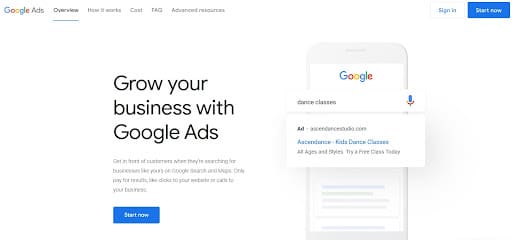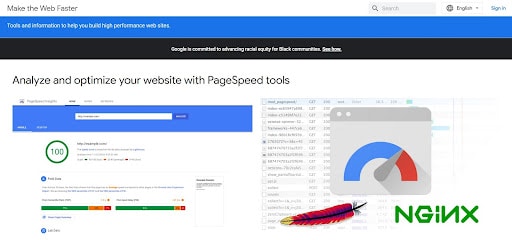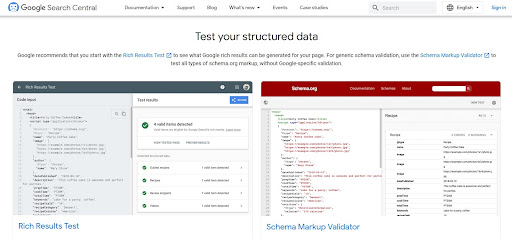There are more than 6 million blogs written per day and around 6 billion Google searches per second. So, you can’t be surprised that your article is just another one in an endless sea of content.
You must wonder, what is the secret of those blogs that always rank first in your Google searches? And more importantly, how do you reach those heights yourself?
This is where a good SEO checklist comes in handy.
An SEO checklist shows you all the important things you need to do, fix, or recheck so that your content can rank higher on any search engine. Simply said, it is the guide to SEO optimization.
So, if you are looking for the ultimate SEO checklist for new websites, your search ends here! This is not your basic SEO checklist we’re offering here – it features all ins and outs that make for top-notch content and equally satisfying SEO.
SEO Basics Checklist
Before you start going through an SEO checklist, you first must know what SEO is. And lucky for you, Google Search Central has a simple beginner’s guide on it.
Putting this to the side, our first step of this SEO implementation checklist is to cover the fundamentals of SEO. Better said, we will go through the most important tools you need so that you can make your page SEO-friendly.
-
Use Bing Webmaster Tools and Google Search Console (GSC)
Knowing how your site performs is the key to getting more outreach. Currently, there are many tools that allow you this possibility. However, the most commonly used is Google Search Console.
This tool gives you insight into the overall changes in your site’s visitors, or more precisely, it tells you why they’re leaving. So naturally, it has many options and data that can help raise organic traffic to your website.
For Bing users, there is an equivalent tool – Bing Webmaster Tools. It uses the same arsenal of methods and data as GSC.
Both of these help you monitor, maintain and fix any issues that your site has. The main focus of these tools is on keywords, click-through rates, identifying crawl or HTML errors, indexing, spam, etc.
-
Use Google Analytics
Once you have the tool that tells you why your site’s traffic is decreasing, you need the tool that will help you keep track of it. This is why Google Analytics was invented.
This free tool helps you monitor who clicks and enters your page – when and how many times – and all other information related to your site traffic. The primary idea of this tool is to highlight the most prominent parts of your site i.e. those that visitors tend to stick more to.
Once you have that, you will know how to improve them and consequently gain more visitors!
-
Generate a Robots.txt File
You might think that you don’t need a robots.txt file as part of your SEO checklist; however, this is what keeps your site from being overloaded with requests.
Robots.txt file is simply used to tell the engine crawlers which URL from your page can be accessed by the crawler. One common misconception is how this influences indexing. Rest assured that the robots.txt file doesn’t affect the indexing and display of your site on Google in any way.
Every site can have a robot.txt file. You can find yours by adding “robots.txt” at the root of your site.
For example: https://www.domain.com/robots.txt
If you don’t have a robot.txt file, you can create one by using plugins or manually with a text editor.
-
Create a Sitemap
It is best when you can see everything that your site offers right in one place. A sitemap is just that – an overview of all files your page has! It has all URLs of your website and it uses that list to tell crawlers which files are important to be indexed.
There are many sitemap formats, but the one that is mostly used is XML. Once you generate your sitemap, be sure to submit it to Google Search Console or Bing Webmaster Tools and put it in your robot.txt file.
If you already have one, you can find it at the root of your site.
For example: https://www.domain.com/sitemap.xml
Check the Manual Actions in Google Search Console
Google has many ways to secure every page that is created and one of them is a manual action. Simply put, manual action is activated when a worker at Google has deemed that your site is not following the Google webmaster quality guidelines.
This can encompass actions like watery content, pure spam, manipulating Google’s search index, hidden text, and many more. It is not set in stone that your site will go through manual action.
Usually, you get notified if this happens. However, that doesn’t mean that you shouldn’t check for it, especially if you’re just starting your site. You can check for any manual actions on your site in the Manual Actions tab in GSC.
-
Check If Your Website is Properly Indexed
Indexing is extremely important in the SEO world. If you want your website to show in the search results, then you first need to get your page indexed. Plus, indexing helps generate relevant traffic to your site.
It’s not that unusual that pages don’t get indexed. Mostly, the fault is found with the developer of the page. Namely, web developers sometimes forget a no-index meta tag in the big blocks of text.
This specific tag blocks Googlebot from placing your site in the Google Search results, regardless of whether other sites link to it or not. A simple way to do so is by checking if your main page or other important ones are shown on Google.
Or search for an SEO audit checklist where you can find an audit tool. If this can’t crawl your site, then neither can the Googlebot.
Keyword Research Checklist
Knowing just the basics of SEO won’t help you rank your page higher. You need to add more to your foundation and that comes in the form of relevant content. The best way to create such a text is to use the right terms.
Searching the web for the right keywords can take days. Every local SEO checklist should contain the most important steps you need to take when going for the relevant keywords. And here they are!
-
Find the Pillar Keywords
You don’t want to you just any word. Clustering too much unimportant information has the opposite effect of what you want to accomplish. That is why you need to make sure that you pick out the most eye-catching yet significant words.
These would include your title, most important headings, and other words that would point to your offer, topic, or category. They are keywords that are “hot” with the competition which puts you in the ring.
Of course, you don’t have to do this process alone. There are many tools that only need for you to insert your topic or offer and they will generate a list of the most significant keywords.
-
Detect and Use Long Tail Keywords
Only using main keywords that are constructed from one or two words has proved difficult and doesn’t give a nice flow to the text. That is why using long-tail keywords is important for your content to be more engaging and thus rank higher.
Long-tail keywords are keyword phrases that are usually made up of three to four words. So, when you search for keywords, make sure that your SEO strategy and SEO checklist include this type as well.
Sometimes, however, they are obvious. For example, if your article is about selling clothes, your long-tail keywords can include “outfits for men” or “summer fashion for women.”
-
Know Your Competition
Just as you want to know your competitors and the products or services they offer, you’d want to know their page too. Simply put, to be able to rank better than them, you first need to know what led them to rank higher than you in the first place.
In the SEO world, this usually means checking their content. Or better said, checking the keywords that they used in their article. There are many tools today that can help you get a better insight into your competitor’s page and their content.
These tools can show you the most used keywords, the number of times they’d been used, and other important data.
-
Make a Keyword Map
When you search for keywords you will end up finding many viable options. Even the tools you use will give you endless choices. That is why it is important to create a keyword map.
In simpler terms, keyword mapping is the process of creating a list of all the keywords you’ve found. In this list, you connect the keywords to the specific page they come from and add any other category that would help you filter them out.
This can include their level of difficulty, the quantity, type of keyword (primary, secondary, etc), etc. All in all, a Keyword Map can give you clarity on which keywords you should use as well as avoid repeating another article.
-
Know What Your Audience is Asking for
Throwing in a few keywords alone won’t make your page climb up higher in the search results. You need to adapt your content to what the users are looking for. This means first understanding the purpose of your content and then targeting it.
The easiest way to do this is to check your competitors and align your content with theirs. Of course, paying attention to what the main questions are from the users, can also help you create better content.
Many give an additional boost to their sites by using Google Ads. This tool can assist you in reaching a broader circle of your target audience by ranking your post among the first few ones.
Technical SEO Checklist
Every SEO best practices checklist has to contain the technical parts that make your text SEO friendly. This is actually what hides behind the content and the page, or better said, it is the fundamentals on which your page is built.
Here is what you need to pay attention to.
-
Make Your Site is Mobile-Friendly
Google has pointed out that it prefers the mobile version to the desktop one for indexing and ranking. And that comes as no surprise considering that, nowadays, everyone is mainly using their phones when it comes to a quick search.
Thus, having a mobile-friendly site can help you rank higher. Google Search Console has mobile usability listed as one of its top ways to optimize your site. It offers not only the testing tool but a mobile usability report as well. You can check your page through the testing tool here.
-
Make Sure That Your Page is Unique
This doesn’t just mean having a page that is different from those of your competitors. Today, you can easily find various domain names, so this problem can be solved fast. The tricky part is letting Googlebot index one version of your page.
Simply put, you can choose many versions for one site.
For example:
- It can look like this https://www.domain.com
or
- It can look like this https://domain.com
In these cases, your best option is to 301 redirect all similar versions to your primary page. This also includes duplicate content – two or more URLs that are the same or similar which can cause confusion.
An easy way to find duplicate pages is to use Google Analytics.
-
Check Your Site Speed
Nobody has the time to wait today, especially when there are other sites where users can find the information they require. That is why having a page that loads and responds fast is key for gaining traffic.
You can check the speed of your website on Google’s PageSpeed. This Google feature is actually a group of tools. So, you can not only see how fast your page responds, but with the PageSpeed tools, you can also optimize the resources on your page, improve security, and more.
-
Use HTTPS
Everyone knows about HTTP (Hypertext Transfer Protocol). For those that don’t, this is the protocol used to transfer data over the web. However, there was one disadvantage to it – security. That is why the extension HTTPS (Hypertext Transfer Protocol Secure) was created.
It is the same protocol, only this one enables the safe transfer of data. If you want your site to be secure, having HTTPS is a must. This also goes for all users that enter your site i.e. many avoid sites that are not risk-free.
The best way to check if you are using HTTPS is by looking at the left side of your search bar. If there is a padlock then you can take it easy. Otherwise, you should transfer.
-
Look Out for Broken Links
Nobody wants to click on a link only to be given the sign “error”. It is frustrating when you can’t easily and promptly access the site you want. And that means that visitors will simply skip your page the next time they try to find something they need online.
Making sure that your linking – internal and external – is correct, is important and plays a vital role. Internal links are easy to fix, but the trick is dealing with the external links. Namely, you never know if a site is active and when it will become inactive.
To ease it on yourself, you can find a good tool that will assist you in this process. The market is filled with many such tools that will tell you if your page has any broken links. Usually, they would signal you the link and you can either change it or opt to delete it.
-
Fix Any Redirects and Crawl Errors
Before you start fixing, you need to know the difference between 301 and 302 redirects. Whereas 302 redirects tell you that the move is temporary, the 301 redirect is harsher i.e. tells you that the redirect is permanent.
Naturally, any 302 redirect asks to be fixed. Otherwise, it simply grows into a 301 redirect. Many tools can point out these types of redirects which would give you the opening you needed to quickly find and repair them.
On the other hand, you can also face crawl errors. This means that your site can’t be accessed by the crawl engine. It can be due to server errors, DNS errors, or any other site error. Google Search Console can help you identify these.
-
Generate an SEO optimized URL
Since you’re making your whole page SEO-friendly, you shouldn’t forget about the URL. An URL should be concise and get straight to the point. It should immediately present what you offer and where they’re landing on your page.
That is why when creating it you’d want to stick to easy and simple. You can use hyphens to separate the words and make the URL clearer.
For example: https://www.domain.com/tomato-juice/
-
Include Structured Data
You can look at structured data as the process of organizing your page’s information. Namely, structured data allows the search engine to detect your data and understand how to display it better.
There are some Google tools that you can use for this part of your technical SEO checklist.
The basic tool is the Rich Results Test. It tests the structured data on your page and shows you which Google-rich results you can get and how they would look. On the other hand, we have the Schema Markup Validator. This tool can help you add a markup to your site so that the search engine gets a better picture of it.
On-Page SEO Checklist
The on page SEO checklist helps you optimize the content on your page. Namely, search engines can read, crawl, and index your text but sometimes they may have trouble doing so. And if it’s so, they might skip it because they don’t understand it.
That is why checking every part of your on page optimization checklist is crucial. On-page SEO gives that little touch that would transform your page and make your content more understandable for the search engine, thus scoring you the chance to rank even higher.
-
Make Sure That Your Title Tag is One of a Kind
Title tags are the first thing users and SEO tools notice from a page. They are the first indicator that tells them what the page is about. So naturally, when they are met with more than one title tag that is the same, search engines have trouble ranking them both.
Even worse is if your title tag is empty. Another issue is when you have a truncated title tag. This is a title that is too long so on the search engine, it ends in three dots after a few words.
Fixing all of these issues makes your page more unique. And with that, you have a better chance of getting a better spot online. There are tools that tell you if your title is too long or there is another one with that same tag and inadvertently help you keep yours updated.
-
Write Catching Meta Descriptions
If the meta title tells users what the page is about, the meta description gives them a small glimpse into what they can read further on. It is right below the title tag on the Search Engine Results Page (SERP).
Google allows you to not place a meta description on your site. But, then Google itself decides what part of your page it will display as a meta description. Sometimes this can work to your benefit, but other times, you will be stuck with useless information as your page’s explanation.
That is why having personalized, unique meta descriptions are important. A catching meta description can help your page stand out and get more clicks.
-
Optimize Your Headings
Another important part of your on page optimization checklist is headings. When somebody enters your page, this is the first thing they are met with because headings always stand out among the rest of the text.
Make sure that you always have one H1 tag – the main heading in your text. Sometimes it happens that a search engine dismisses your page just because it has more than one H1 tag. It is usually due to setting this tag in your logo as well.
Headings give a structured view of your page. They make it easier to navigate through and find what you need faster. Here are some tips:
- Add the main keyword in your H1 tag;
- Add secondary keywords in other headings;
- Keep your headings short and catchy.
-
Do a Content Audit
Any extra content should definitely go. SEO tools and search engines place pages with watery content lower than the rest. So, a content audit is a great way to make sure your content delivers quality.
A content audit basically helps you get rid of any unnecessary information that is on your page. You can get rid of duplicate headings, duplicate content, and everything else that is deemed low-quality.
-
Watch Out for Keyword Cannibalization
Keyword cannibalization is when two or more pages use the same keyword and compete with each other which hurts the site’s organic performance. In general, this term is nothing about the keyword. Its intention is to harm your page.
To put it simply, if your page is hurting from cannibalization, the search engine will have a harder time figuring out which site to show on the SERP. In reality, keyword cannibalization is much more complex.
You can have two sites that use the same keyword but it doesn’t necessarily mean it’s cannibalization. Namely, these two sites have hundreds of other keywords that they use, and occupying one is hardly going to be a dealbreaker for one site’s performance.
-
Pay Attention to Image Optimization
It’s not just your text the search engines look at. Every image that you place on your page is also read by them. After that, they make a comprehensive analysis and from everything gathered they rank your content.
It might seem strange that search engines can read images. They use the alt tag in the code to memorize what that image is about and when you search for something similar to it, they show it to you. This is why using a descriptive alt tag is significant. Of course, this doesn’t mean to elaborate everything on the picture, but add something that would shortly describe it.
-
Check for Orphaned Links
Orphaned links are another reason why the search engine or users in general, avoid your page. These are links that are not connected to any other part of your site. The reasons can be various:
- You forget to link it;
- You mistyped the link;
- You were in the process of replacing it and this one slipped through; etc.
Orphaned links are usually confused with broken links. However, there is a difference. Unlike orphaned links, broken links are links that used to connect to some page, but for some reason, they don’t anymore.
This also brings the question of internal links. The more you open other doors to your site, the more traffic you can generate. Check your sitemap and you can see all links on your page, including internal, broken, or orphaned links.
-
Regularly Update Your Content
You can’t expect people to come to your site, or for Googlebot to crawl and index it if your content talks about something that is long gone. Everyone wants fresh and new content and providing them with one shows that you’re committed to your page. This in return, tells Googlebot that indexing is important.
Updating your content is one of the easiest tasks. It usually takes a few minutes to change the time-specific info. However, this depends on the type of text you have on your hands. Sometimes, you might need to go out of your way and add the extra effort into bringing your content a contemporary feel.
Off Page SEO Checklist
You might have noticed the emphasis we placed on putting the right links in the right places. That is because this is an important part of your SEO checklist.
Off-page optimization, also called link building or linking, is the bridge that brings more traffic to your page. Once you tick everything out of your off page SEO checklist you can sit back and enjoy the visits.
But linking is not as easy as it sounds. Here are the most important parts you need to know to make off-page optimization worth your time.
-
Fix Unlinked Mentions of Your Page
It is great if you link others’ pages, and naturally, you would expect them to do the same for you. However, there are many times when a page doesn’t link the main source. This means that your page won’t get additional traffic even though it is mentioned.
This is what brand monitoring is about. Today, there are tools that can help you pinpoint mentions of your brand or page. Then you can contact the other site and request that you be linked. Usually, they are more than happy to comply considering they’ve already mentioned you.
-
Know Your Competitor’s Link Profile
Just as you would want to know the content of your competitor’s page, you should want to know the links they use as well. Mainly because links play a crucial role in ranking the page. That would mean that your competitor has something – a connection to another page – that makes him stand out more.
This is where a link intersect analysis can be helpful. It gives you the pages that are mostly linked by your competitors. And if you are not part of that group, here is your chance to join them. All you have to do is ask them if you can link their page to yours as an external link.
-
Use Relevant External Links
As we mentioned above, this is a must in your SEO off page checklist. External linking shows that you have done your research. It gives more strength to your content and makes it more believable.
Most of the time, external links require you to ask for permission from the holder of that page. But the Internet is a vast place with many opportunities and all of its content is unbound. Simply put, you can use the most prominent pages as an external link without any previous consent.
To ease yourself in this process, you can use link-building tools that would show you the relevant external links. This way you can get an upper hand with the competition and rank better than them.
-
Use Google My Business
An offpage SEO checklist should contain only linking. There are many other tools that are deemed as part of it. Take Google My Business as an example.
If you are running a business and your page is the official site of it, then having a profile on Google Business can be a game-changer. This tool helps you bring your page to your target area by marking it with a few keywords related to your business, as well as localizing it. For example, if you work as a mechanic, then the next time someone types “mechanic near me” you will be the first name that pops up!
Using Google Business is not easy. It requires time and you will need to always keep it up-to-date. But it generates traffic to your online and brick-and-mortar shop.
-
Practice Guest Posts
Guest posts are just what the name says – you go on somebody else’s page and write for it. But of course, it comes with a benefit for you too. In guest posts, you can link your page and bring additional visits!
Guest posts are a great way to organically increase the traffic on your website. Back in 2013, this technique was highly used which lead to creating a spam controversy around it. Even the CEO of Google at the time requested for everyone to refrain from using guest posts.
But, this doesn’t mean that it’s banned or bad. If used the right way – create valid content with naturally placed linking – you can raise the ranking of your page.
Final Thoughts
There you have it – a simple SEO checklist containing all the basics. Regardless of whether you are new to SEO or already know everything about it but still want to improve, a basic SEO checklist is a must in your arsenal.
In today’s modern world, SEO optimization is key to gaining more recognition and traffic online. Everything is based on the Internet – even your shop can go digital! And the best road to fame is to create content that is SEO-friendly!
In general, when creating checklists, SEO should be the first one you make. The great thing about them is that you don’t have to follow a preset one. Create your own SEO checklist and highlight the most important things you need to work on to get your site on the first page of any search engine!










